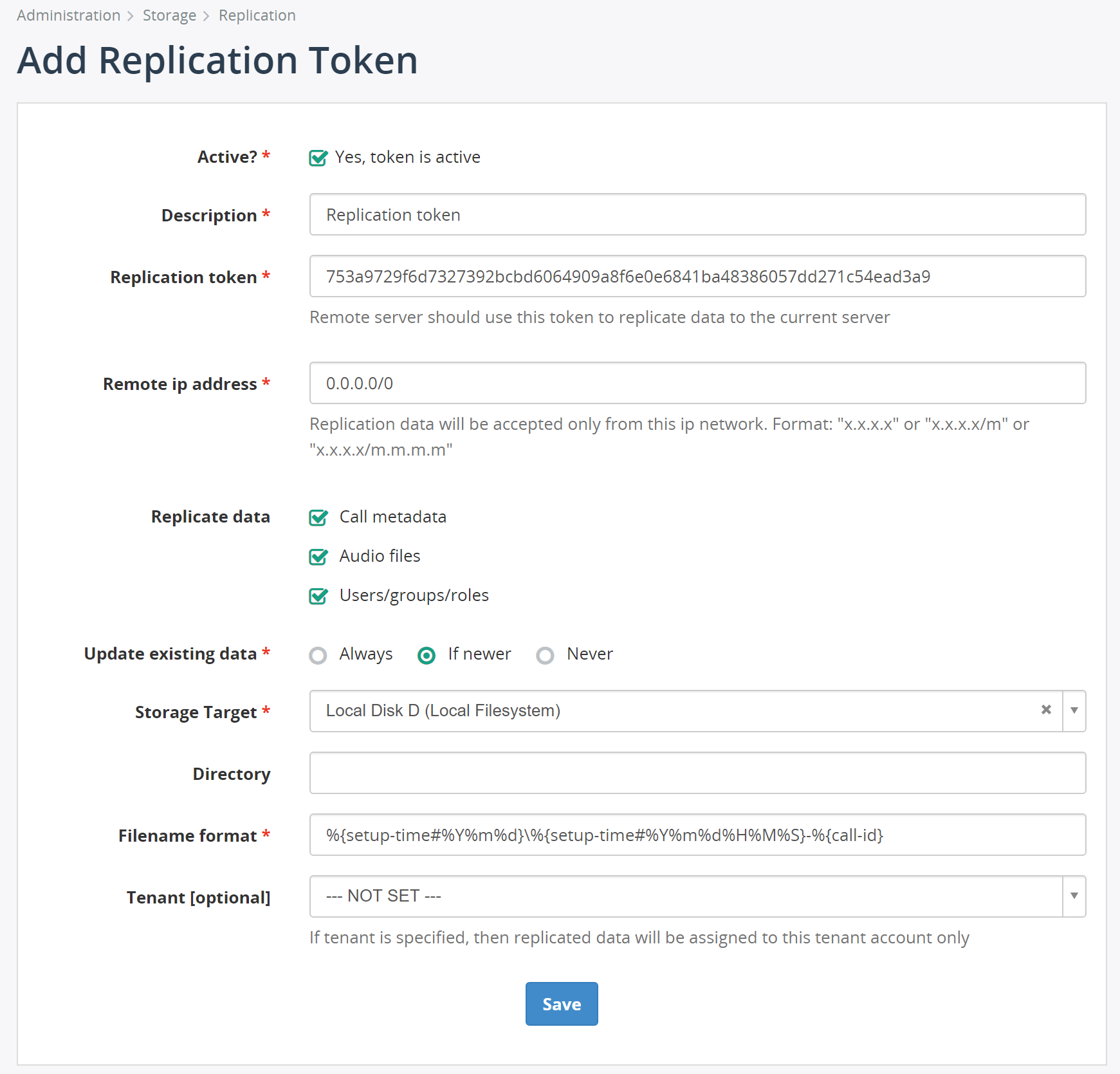Configuring target server (recipient)
Step 1. Create Storage Target for the received recordings
Navigate to Administration -> Storage -> Storage Targets, click Add button to create new storage target for the received files from a remote server.
Supported storage target types:
- Local File System (the same server, where the web portal component is running on)
- Network Share (SMB)
- FTP/FTPS Server
- SFTP Server
- Amazon S3 bucket
In this example, we create a Local File System storage target, i.e. the received files will be stored on the local server, where the MiaRec web portal is running on.

When Local File System storage is used and the web portal is running on Linux, then you need to change ownership to the folder on disk. Execute the following command (change the file path as necessary):
On Centos:
chown -R apache:apache /var/miarec/replicated-recordings
On Ubuntu:
chown -R www-data:www-data /var/miarec/replicated-recordings
Caution! Do not use the same folder for storing the locally recorded files as well as replicated files as it will cause permission issues. The locally recorded files are stored by default at /var/miarec/recordings.
Step 2. Create the incoming replication token.
Navigate to Administration -> Storage -> Replication to configure incoming replication token
Click on Add token button to create a secure token for incoming replication. This secure token will be used by the sender server to upload data to the target server.
Fill out the following parameters:
- Replication token. A replication token, auto-generated. Optionally, it can be modified.
- Remote ip address (recommended). The IP-address or IP network mask of the sender server. This parameter can be set to "0.0.0.0/0" to accept replication data from any IP-address.
- Replicate data. Data that is replicated
- Update existing data. A conflict resolution strategy when the same record is updated on both servers.
- Storage target. A location of the received data (audio files)
- Directory (optional). A sub-directory within the Storage Target path
- Filename format. A format for filenames and, optionally, directories. The replication process can inject various call metadata attributes into file/directory names. For example, it can create directory for each day in format
YYYYMMDDand then includecaller-numberandcalled-numberinto file name. More details about file name format Tenant (optional). When specified, the replicated data will be imported into the specified tenant account.
The same target server may receive data from multiple source servers. You will need to create a token for each source server.

Hit Save button.